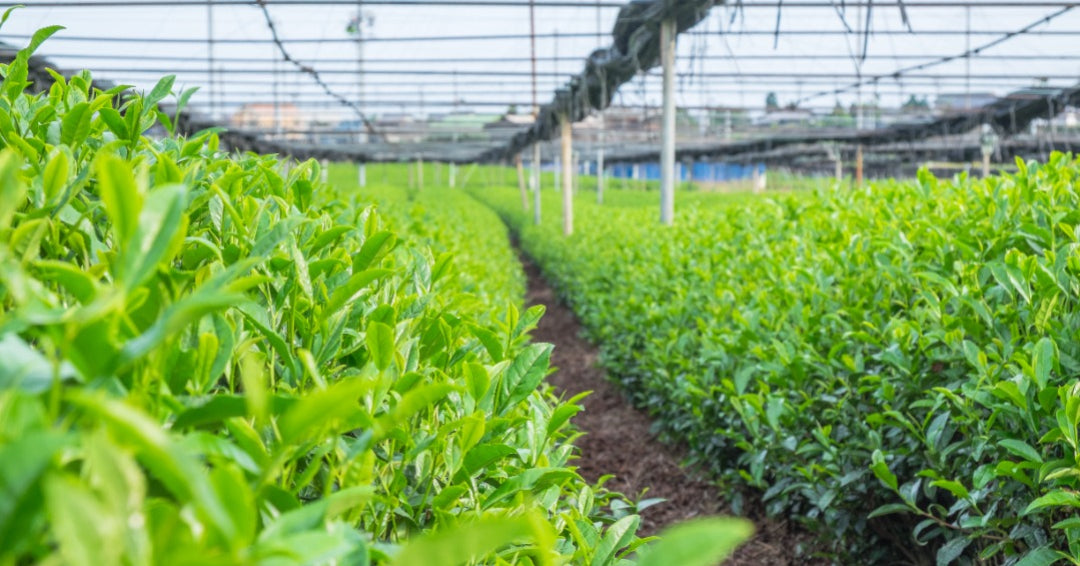THE JOURNEY OF MATCHA
MEISŌ Matcha comes from Japan's two most famous tea-growing regions. Uji, on the southeastern border of Kyoto and Kagoshima Prefecture on the southern island of Kyūshū. The region best known for growing Matcha is Uji, the birthplace and "holy land" of this exquisite tea, where expert Matcha farmers have been mastering their craft for more than half a millennium, harvesting some of the best conventionally grown Matcha tea. The second largest tea-growing area in Japan is Kagoshima Prefecture, known for its lush vegetation and unspoiled nature. The ash from the still active volcanic island provides valuable nutrients and minerals for the region's soils. The warm and humid climate provides the best growing conditions for the precious tea plants, which is later reflected in the taste. These optimal conditions have led to the fact that matcha tea has been successfully grown in Kagoshima for about 700 years and is one of the best organic Matcha teas in the world.
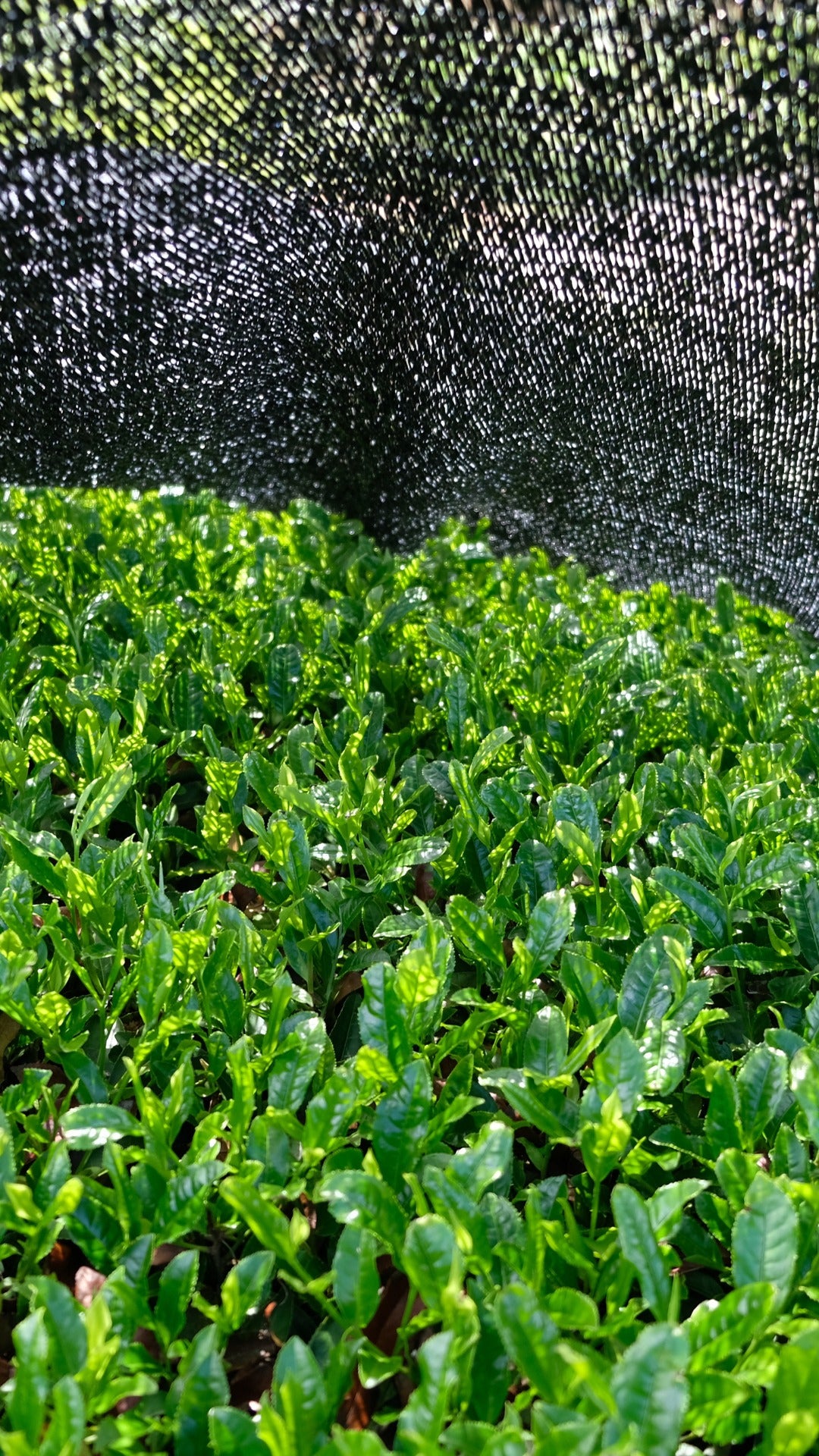
ORIGIN OF MATCHA
What makes Matcha truly special is the way it is grown, harvested and manufactured, which is why only a small elite among Japanese tea farmers can produce it. It is the conditions under which Matcha is grown and produced that contribute to its unique color, aroma and flavor profile. Camellia sinensis, the tea plant from which Matcha is made, is grown in special shaded plantations. These are protected from direct sunlight with dark netting for about 30 days before harvest. This unique shading technique reduces solar radiation by 90% and thus increases the photosynthesis rate. The tea plant Camellia sinensis compensates for the loss of sunlight by producing particularly intense chlorophyll, and the leaves produce more theanine, an amino acid responsible for Matcha's delicate and sweet-savory flavor profile. The darker the conditions in which the tea plant grows, the better the Matcha quality, and that's why the highest qualities of Matcha are grown almost in the dark when it's time to harvest.
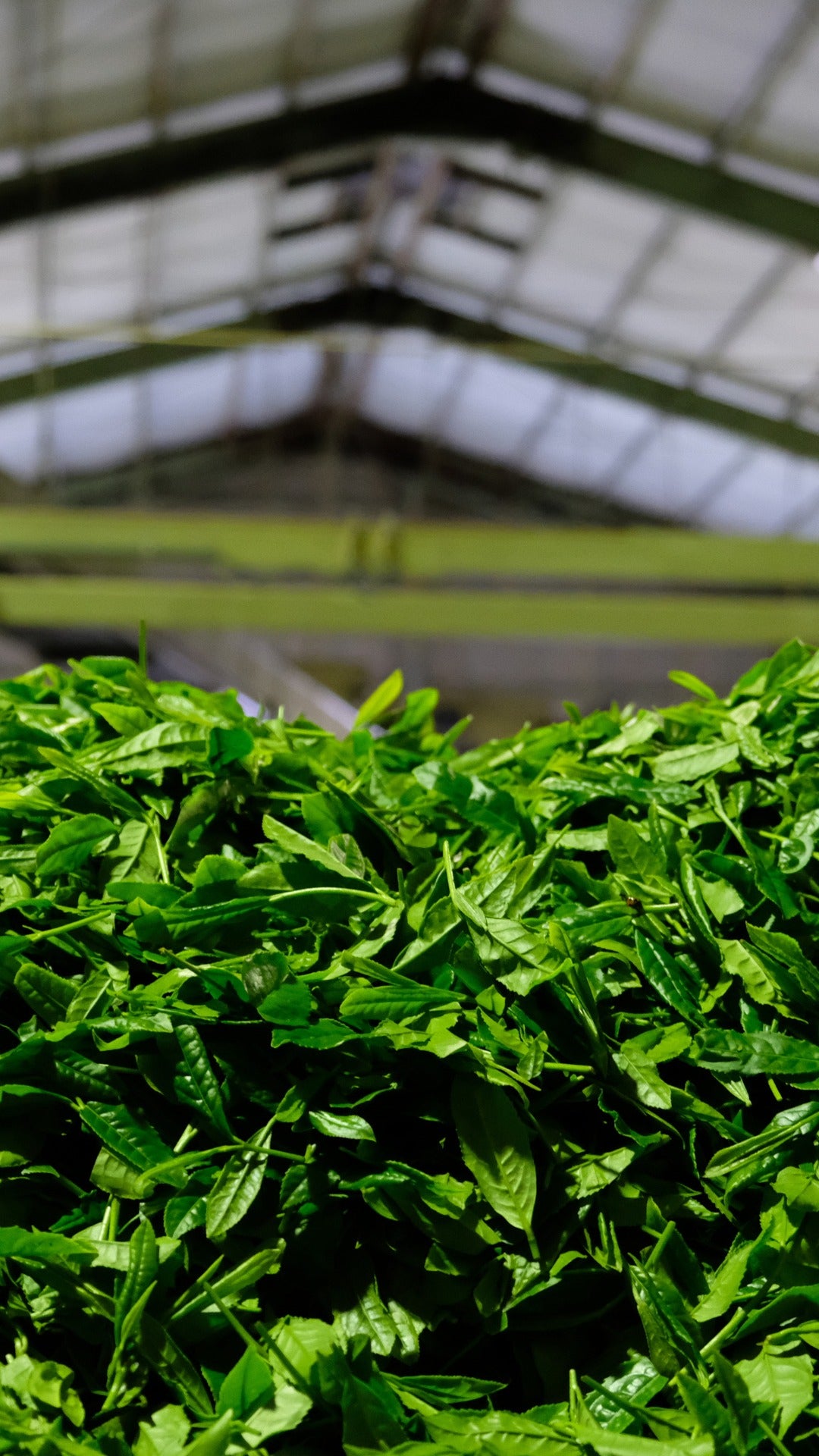
TENCHA HARVEST
The harvest of the young, fresh tea leaves begins at the beginning of May. They are picked by hand from the tea plants "first flush" -ichibancha-番茶-, which is considered the best selection among experts and connoisseurs. For this, only two leaves and one bud are picked, which become "raw tea"-namacha-生茶-. The bud and the next two tender tea leaves at the top of the tea plant are the youngest, greenest and most nutritious parts, and therefore a symbol of true perfection. After harvesting, they are transported by the fastest route to small tea manufactories for further processing. Here begins the long journey of the tea leaves to the Matcha product. To preserve the natural vibrant green color and their distinct flavors and nutrients, the young tea leaves are steamed for about 20 seconds to stop the oxidation process. The leaves are then dried and processed into "rough tea" -aracha-荒茶-, which leaves them weighing only about one-fifth of the original leaf. At this stage, the unrefined tea leaves are then de-stemmed and de-veined, filtering out only the finest parts of the leaves to make the finest "mortar tea" -tencha-碾茶-.
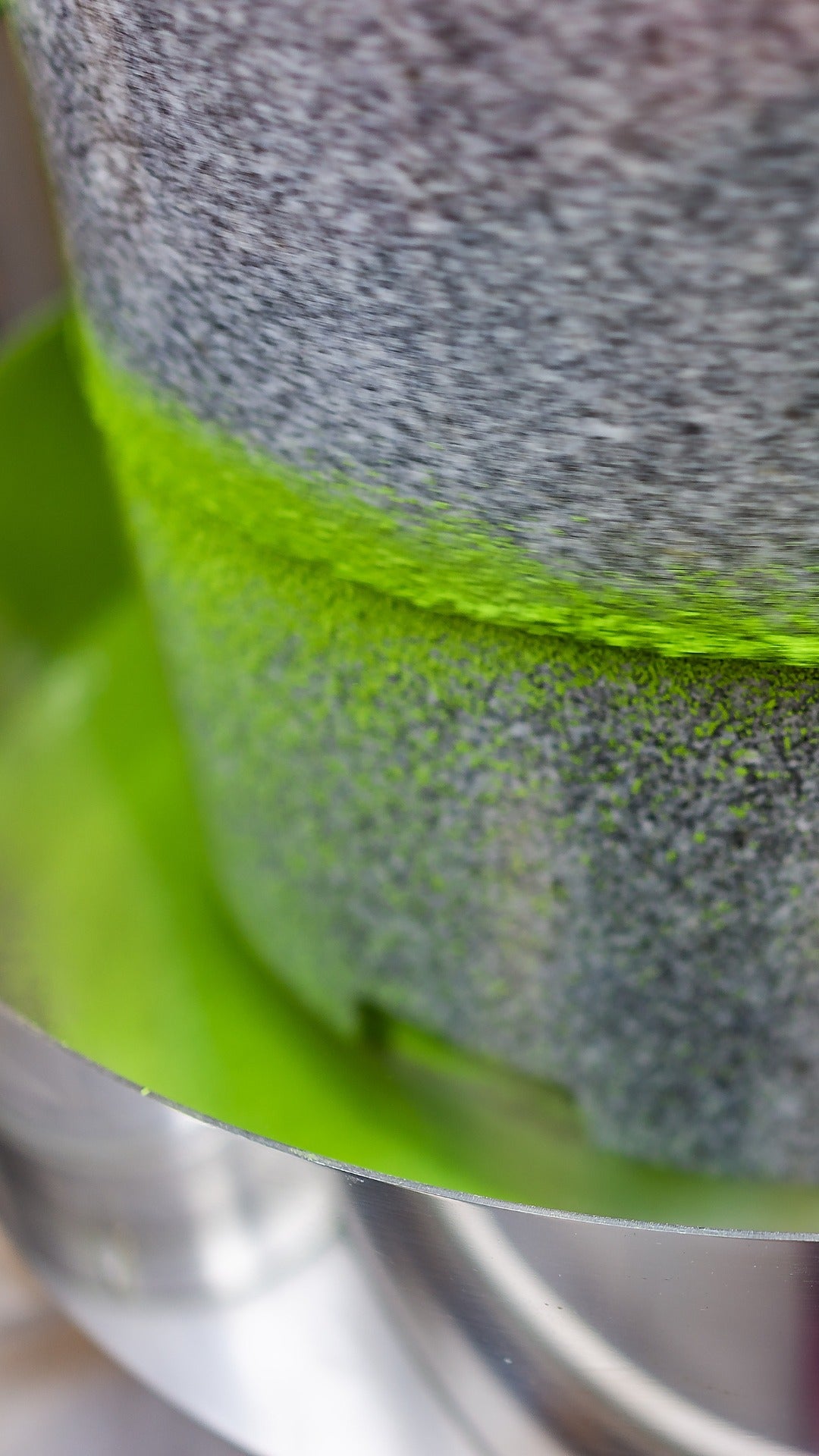
MATCHA GRINDING
In the final stage of the manufacturing process, the fine tencha leaves are ground into fine powder to produce "ground tea" -matcha-抹茶-. Tencha is ground into Matcha in traditional, slowly turning granite stone mills. Still made by hand, they are a necessary tool in the 21st century to preserve color, flavor and aroma during the delicate grinding process. This technique produces about 40 grams of "ground tea" per hour, which is equivalent to one can of Matcha. It is this special grinding process that gives Matcha its name.
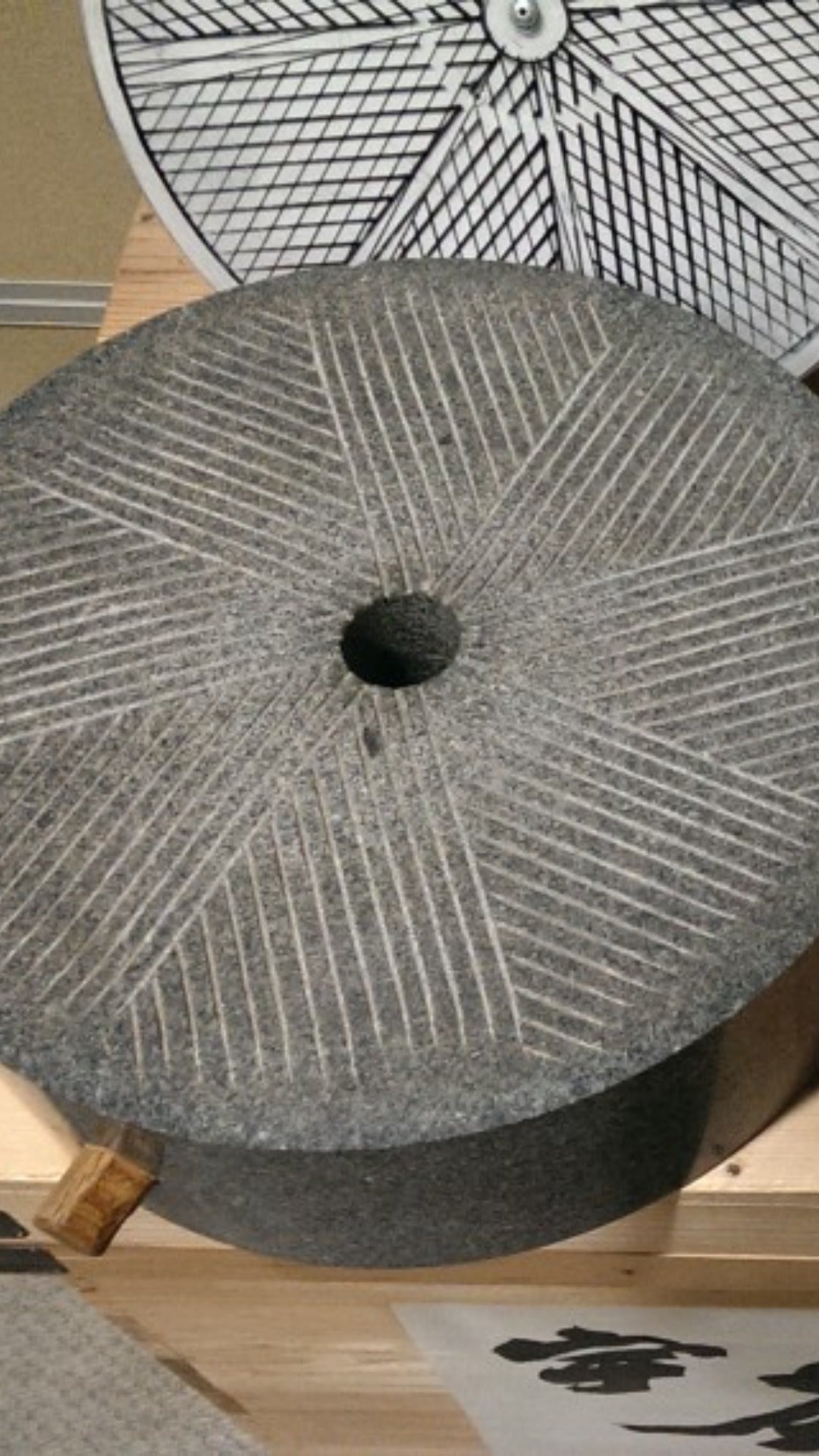
GRANITE STONE MILL
For centuries, the special granite stone mills have been made by skilled stonemasons. The high art of making a granite Matcha stone mill can be learned in a 10-year apprenticeship. Many years of experience, the right feeling for the stone and attention to detail are the most important prerequisites for the success of these stonemasons. The grinding process determines both the taste and the color of the resulting Matcha. It must also be ground so finely that it can even penetrate fingerprints, just one micrometer (μm). Therefore, the perfect grinding of Matcha tea requires the craftsmanship of a stonemason. The indentations that push the "ground tea" outward must be carefully engraved and may only be a few millimeters deep. Towards the center, the indentations in the granite stone mill become deeper and deeper, so that they are barely visible to the naked eye.
THE FINAL STEP
What makes Matcha so unique and precious is the complex and rigorous cultivation and manufacturing process. We hope you appreciate the time and effort that goes into this process. The final and most important part of the journey is enjoying our fine, handcrafted Matcha.

